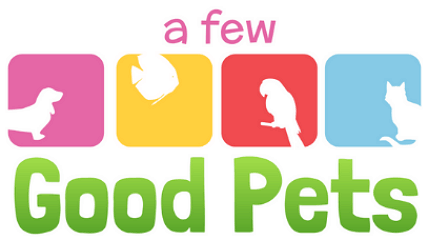Bunnies are arguably one of the most adorable animals on the planet. After visiting a petting zoo, many children ask their parents if they can get a bunny. While this idea might seem absurd, bunnies actually make excellent indoor companions due to their ability to be house trained.
How do you house train a bunny? Bunnies, much like cats, can be taught to use a litter box. Rabbits tend to go potty in the same place, typically a corner where they can eye their surroundings and ensure they will not be invaded.
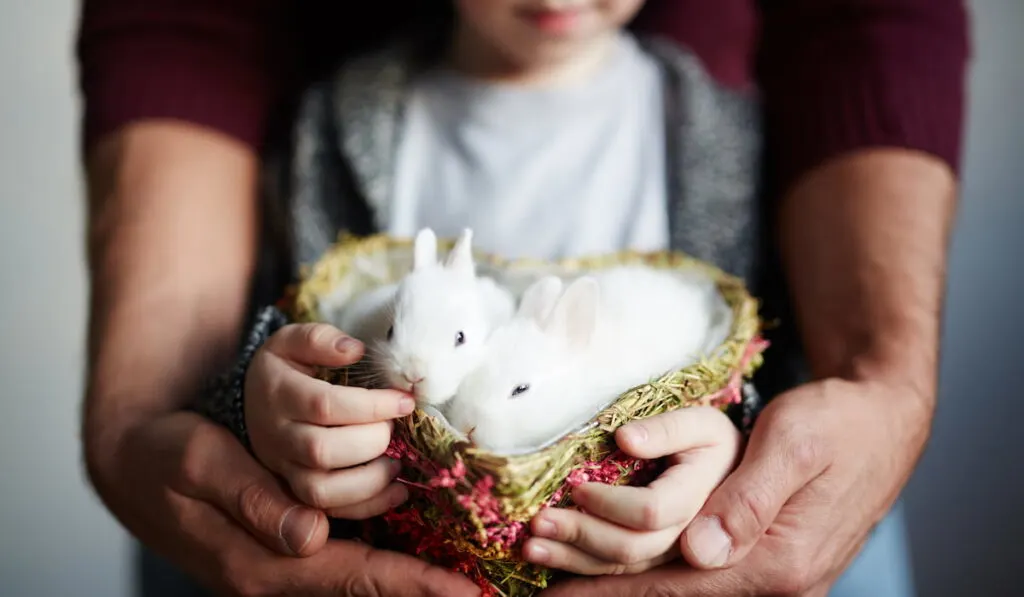
Bunny house training is not difficult. It just requires the right tools, patience, and persistence. And a little reward from time to time certainly doesn’t hurt! We have created a step by step guide to teach you the do’s and don’ts of bunny house training.
Table of Contents
Step 1: Be Prepared When You Bring Bunny Home
Have the foresight to know that this new animal under your care will need certain things to survive and thrive. Since potty training will begin the day they arrive, it is critical you have a litter box containing lining, litter, and hay.
You will also need rabbit food (pellets easily purchased at any local pet store) as well as a warm bed or blanket for the rabbit to sleep on, and toys for them to play with and snuggle.
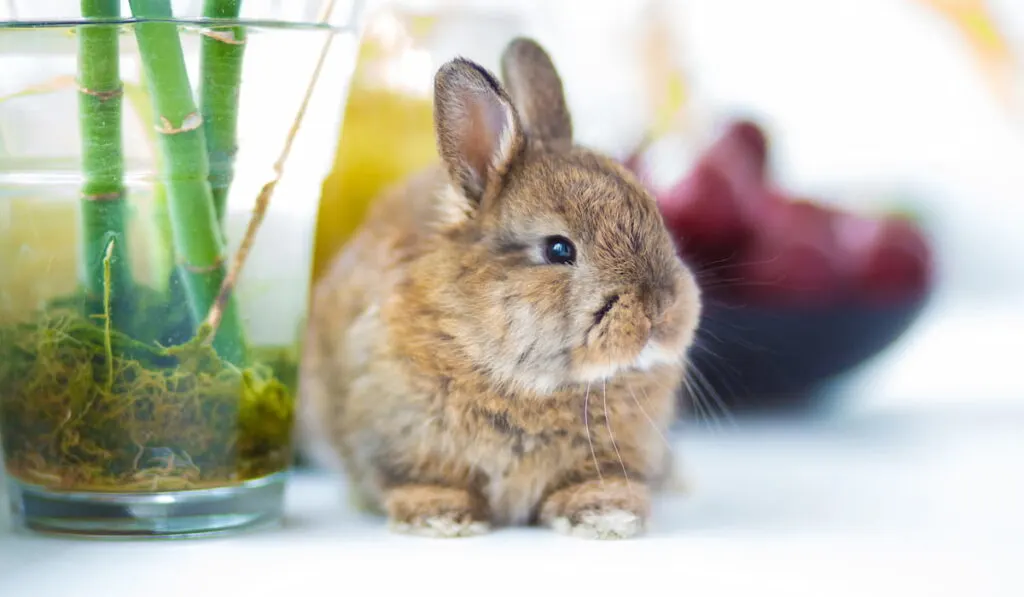
Step 2: Have Patience and Be Persistent
In order to show your new fur baby the optimal amount of love and patience during their house training, it can be helpful for you (the pet parent) to understand how long this process can take.
A bunny can take anywhere from two days to two weeks to be successfully housebroken. Some particularly testy bunnies may take even longer!
However, the key to house training your bunny is keeping a close watch, being vigilant, and being patient. Bunnies do not respond well to punishment as a form of teaching.
Rabbits respond well only to positive affirmation and rewards for their good behavior. You want your bunny to associate their litter box with positive feelings, not feelings of fear.
Therefore, be patient with your rabbit. They will have accidents. Lots of them! Do your diligence of sanitizing and deodorizing those accident spots and continue reminding your bunny of the proper place they need to do their business.
Know what it Looks like When They’re ‘About to Go’
Looks for signs that your bunny is about to go. Typically, their tail will shoot up. When you see this, scoop your bunny up from behind and plop them (gently) in their litter box.
The more you can keep an eye on them and catch them before they have an accident, the quicker they will start to associate their litter box as the place they do their business.
Place Litter Box in Cage or Behind Gated Area
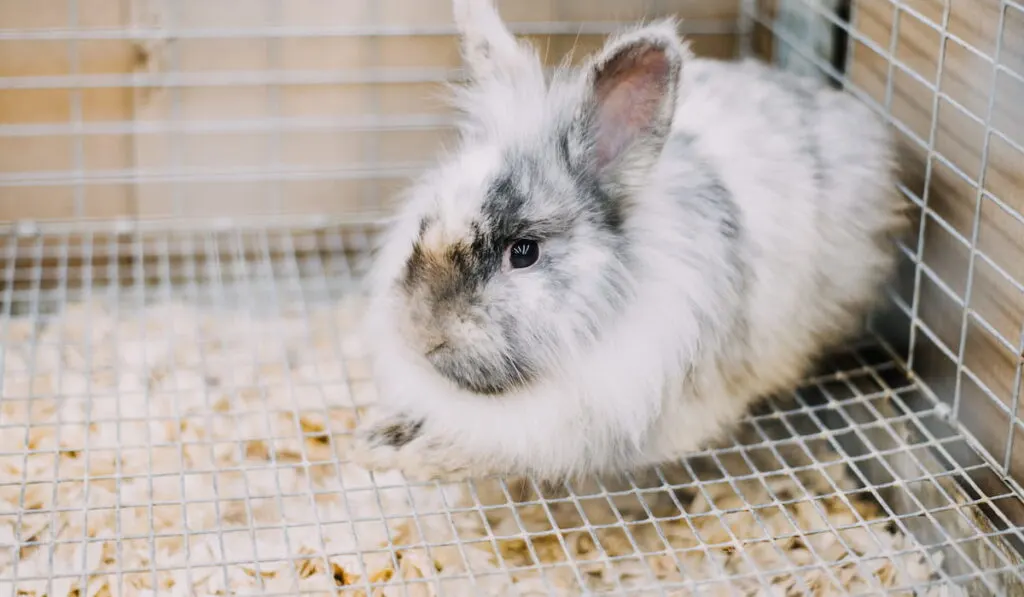
Start small. Set their litter box inside their cage or room. Shut the cage or room door and allow the house training to start here first, in this smaller space.
They will have no other choice than to go potty in their litter box in this smaller area. The same rules are applied if you install a baby gate or some equivalent to block them from other parts of the house until they can control their urges.
Once your bunny begins using their litter box inside their cage/room, you’ll want to open their cage door and allow them to explore and teach them to continue returning to the litter box, even when outside their cage.
If your bunny heads to a new corner of the house and lifts their tail, shout “NO!” in a single, loud burst. Then, scoop the bunny up (gently) and relocate them back to their litter box.
To ensure your bunny doesn’t mistake the litter box as some ‘punishment zone’ where they go when they are in trouble, offer them a treat in their litter box. Remember not to rush the process. Let your bunny learn at their own place so that they don’t feel scared or punished.
Give Rewards
Bunnies love treats. When your rabbit uses their litter box, reinforce this behavior with a congratulatory treat. Do this over and over for reinforcement. Be sure to have treats on hand though–they’ll start expecting nibbles every time they go potty!
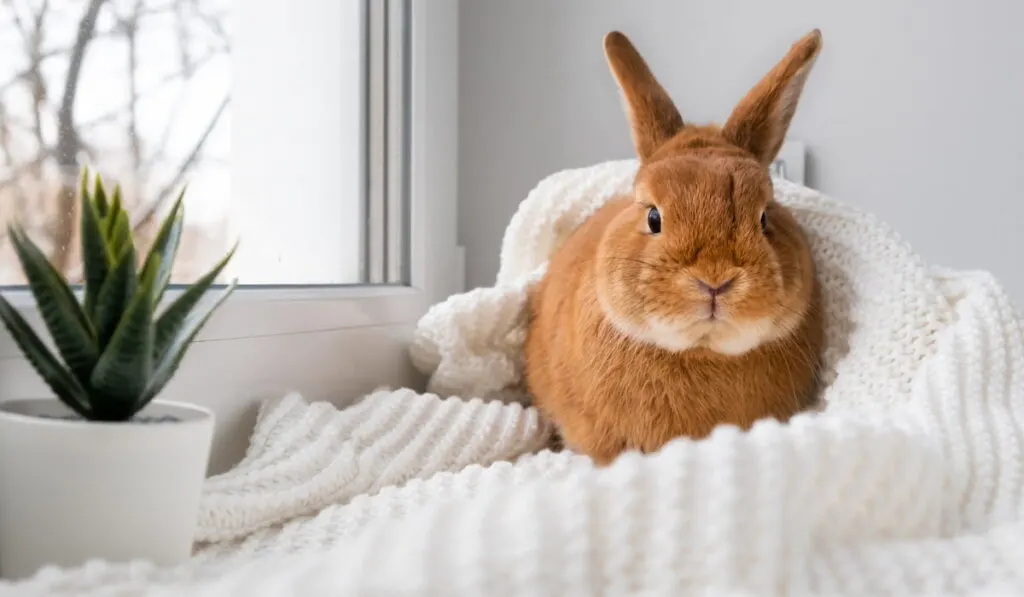
Step 3: House Train at the Right Age
Baby rabbits are rather hard to litter train. Their attention spans are short. They are not impossible to coach along, but it is more of a chore. Older bunnies, on the other hand, are much easier to train as their attention spans are longer, and they have a keen ability to learn and adapt.
If you have not yet adopted a rabbit, you might opt for adopting a rabbit who is not a fresh newborn bunny.
A rabbit starts to mature around 4 months of age. This is when their hormones start to develop. If you are looking to adopt a more ‘mature’ bunny who will understand litter training more easily, we recommend getting a bunny that is 4 months or older.
Step 4: Spay/Neuter
Rabbits ought to be spayed or neutered between the ages of 4-6 months. This is typically when their hormones kick in. These hormones encourage behavior like territorial marking.
When it comes to potty training, no step could be more helpful in aiding your bunny in using their litter box without accidents. Spaying and neutering your rabbit increase the likelihood of house-training success and, as mentioned above, also breeds (pun intended) a healthier and happier rabbit companion.
If you are unsure where to get your bunny spayed or neutered, Rabbit.Org provides an excellent list of rabbit friendly Veterinarians throughout the U.S.
Step 5: Get the Correct Litter Box
The ideal litter box for bunnies will be small, with low sides and no top. Shallow storage tubs often make excellent bunny litter boxes over traditional cat boxes (which can sometimes be too tall for bunnies.)
If you do go with a more traditional cat litter box, we simply recommend you cut a little doorway on one of the sides if you find it is too small for your rabbit.
Step 6: Invest in the Correct Type of Litter Combination
A rabbit owner should line the box with a liner. Pee-pee pads or newspaper work just fine. This layer is to absorb the wetness of the rabbit urine. Then the box should be filled with rabbit-safe litter.
No need to fill the box too high with litter since it will also be filled with ha (alfalfa or oat straw). Why alfalfa or oat straw? Rabbits like to eat while they do their business. It aids them in their digestion, and it’s fun to eat while you go!
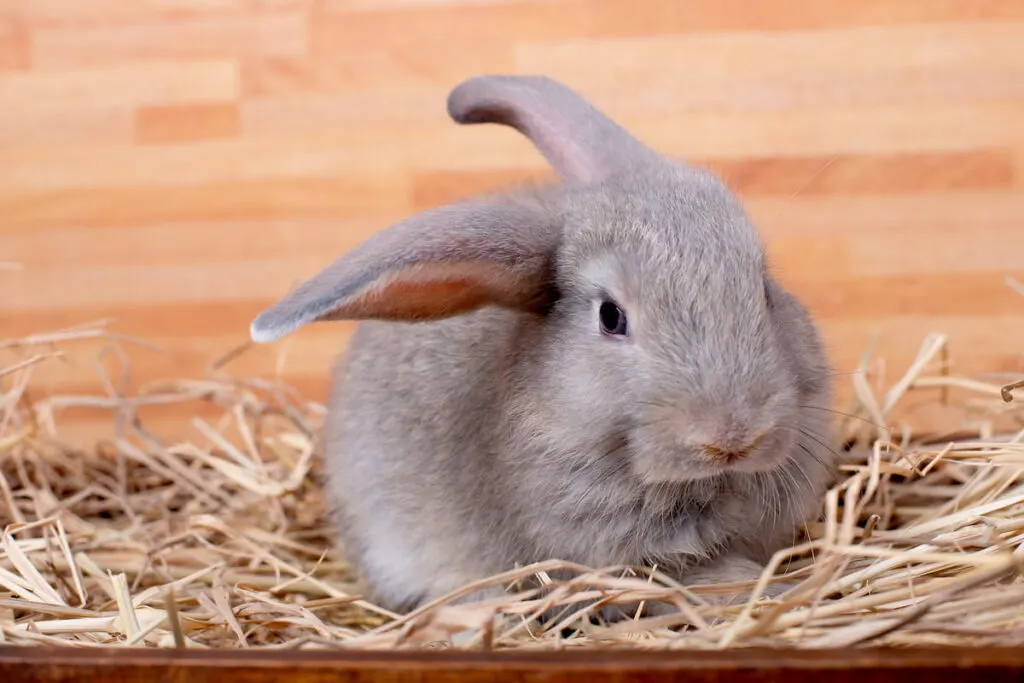
Do: use only organic litters made from alfalfa, oat straw, paper, or citrus. When placing hunks of alfalfa and oat straw on top, leave them in one corner so that the rabbit is more likely to urinate on the litter and eat the hay, instead of the other way around.
Types of litter House Rabbit Society has tested and found to be safe for rabbits:
- Carefresh – Natural and super absorbent. It is non-toxic and dust-free.
- Cat Country (organic) – grass-based pellets
- Critter Country (organic) – grass-based pellets
- Oxbow Comfort Bedding (organic) – grass-based pellets
- Yesterday’s News – paper-based and safe for rabbits
- Straw – While stray can be used solo in a litter box, it can be messy to clean. Therefore, we recommend a combo of litter and straw (the straw mainly existing in the box for the bunny to munch on when it goes wee)
- Peat Moss – A manure/peat moss mixture is better for under cages than directly in a litter box. It is safe to use. It does, however, smell like a freshly mowed field. This might not be the best option for those with allergies.
- Aspen Pellets – One of the few wood products permitted use in litter boxes for rabbits, aspen is made of hard-word which is non-toxic due to the phenolic compounds removed in manufacturing. The aspen also naturally controls bacteria growth and eliminate odors. The brand GentleTouch makes a great, safe rabbit litter.

Don’t: use litters made of softwood (pine, cedar, wood chips). These types of wood have been known to cause liver damage in rabbits when the wood particles are inhaled. (source)
We also recommend avoiding wheat-based litters like ‘Swheat Scoop’ because the rabbits will chow down on the wheat, and unfortunately, it is rather caloric. This can lead to health conditions like obesity (in addition to digestion issues that can cause diarrhea, bacteria in the G.I tract, etc.)
Do not use corn-cob litters as they can cause lethal blockages in a rabbit’s G.I tract.
Do not use clay litter if your bunny is a digger. The crystals in some clay litter are toxic, and when a bunny digs, it creates dust, which they then inhale, and it can leave them vulnerable to pneumonia.
We also do not recommend you use ‘clumping litters.’ If ingested by your rabbit, the litter will indeed clump inside their digestive (and sometimes) respiratory tracts, which can sometimes result in death.
Step 7: Let the Bunny Pick the Ideal Corner for the Litter Box
As previously mentioned, bunnies already have a natural tendency to pick a designated corner as their own, as well as a private place to do their business. When you bring your bunny home, pay attention to their preferences. If you notice your rabbit fancies a particular corner of their cage/room, take that as a sign for where to house their litter box.
Step 8: Clean the Litter Box Daily
Because rabbits eat the contents inside their litter box, we recommend changing out their hay daily. Keeping the litter box clean also encourages further litter box use, as dirty litter boxes can deter a rabbit from using that space to do their business if it feels too.
To sanitize the litter box, use non-toxic cleaning supplies like white vinegar to rinse and clean the box out. If there are particularly difficult stains, leave the vinegar in to soak in the litter box till the stains lift.
Step 9: Sanitize and Deodorize Accident Spots that Occur Outside of Litter Box
It is paramount a bunny owner cleans their bunny’s accidents quickly and effectively to both sanitize and deodorize the urine or poop spots. If a rabbit has an accident outside the litter box and the spot is not properly deodorized, the bunny may repeat the behavior when they smell their territorial markings.
White vinegar is great for accident spots, as well as club soda. Other products, such as Nature’s Miracle, work great to remove pet stains and odors.
To continue house training your bunny, leaving the urine-soaked paper towel in their litter box can sometimes be an effective trick to remind your fluffy friend where their territory really is (i.e., the litter box.)
Additionally, when disposing of rabbit pills (poop), you can simply toss the rabbit pills into the garden to biodegrade and be used as a natural fertilizer.
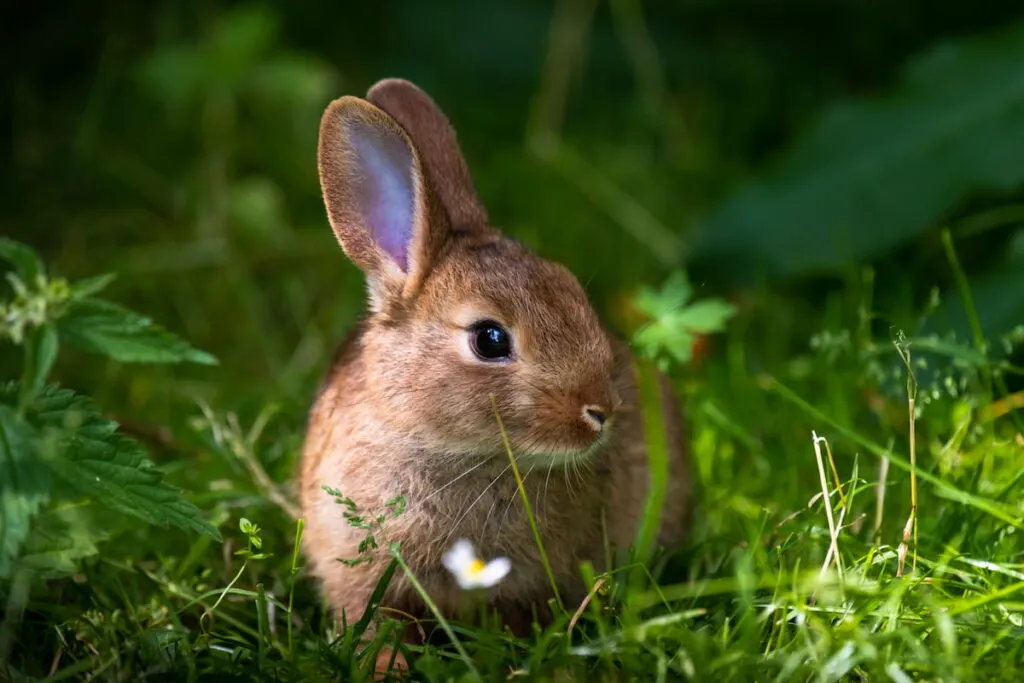
Step 10: Understand the Difference Between an Accident and Marking Territory
If you notice your rabbit is dropping pills all-around their rabbit cage, it may initially appear as a failure to adhere to house training. However, this is actually more likely a sign that your bunny is marking its cage as its territory.
You don’t want to discourage this behavior because the act of marking the cage then means the bunny is less likely to mark family areas around the house.
If the cage is where the pills and urine are, then the bunny knows that is its territory (vs) marking your living room or couch as its territory.
However, what you can do is remove some of those pills and place them into the litter box to further encourage the ideal potty spot.
Step 11: You Can Have Multiple Litter Boxes
Once your bunny is properly house trained in one litter box, you can place another litter box around the house. The process for training them to this box will be easier but will use similar methods.
Start by transporting some of their urine-soaked litter or hay to the second litter box. Do this with the rabbit pills as well.
That way, when the bunny encounters the new litter box, their scent will already be in the litter box. They will automatically associate this as one of their designated areas they can take ownership of.
Step 12: Know that Sleeping in their Litter Box is Normal
Some rabbits will take a snooze in their litter box. This may seem nasty to you, but it’s natural and certainly not unheard of.
You can gently remove them when you see this behavior and set them on their bed or another plush surface. That way they will associate other spaces as a cozy place to lie their head.
Step 13: Be Flexible
Like any animal, rabbits all have different personalities and are not robots. They will think for themselves and make quirky choices that are often irksome for their human pet parents.
Your Rabbit Prefers a Different Spot
If your bunny insists on going potty in a spot that is not their litter box, then meet your bunny halfway by relocating their litter box to this spot they love to pee on so much. You might just be pleasantly surprised to find the bunny take to going to the bathroom in their litter box now that it’s in their preferred location.
Your Rabbit Kicks Litter Out or Misses the Box Slightly
Perhaps your rabbit is using their litter box, but they just aren’t very good at it. Some rabbits dig around their boxes while others kick litter out.
This can be very annoying for pet parents who don’t want urine-soaked hay everywhere (can’t say we blame you!).
Other bunnies get a bit lazy and sloppy when they do their business and can urinate over the edge of their box.
The solution to both these problems is to get a cover for the litter box. Create a hole for the bunny for them to enter the litter box but cover the sides, so they are unable to kick litter out or accidentally pee outside of the box without realizing it.
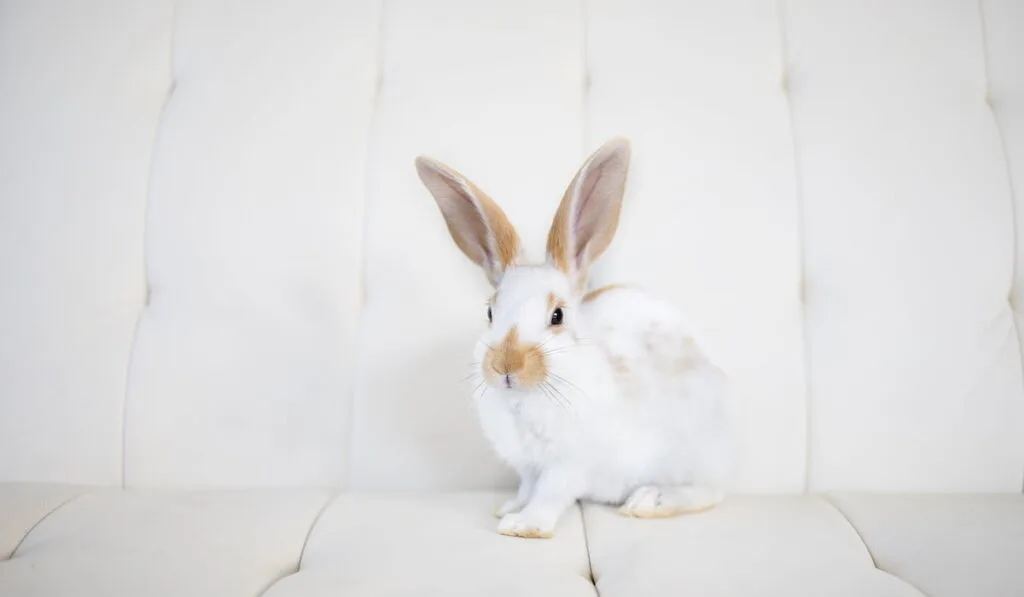
Step 14: Understand the Difference Between Misbehavior and Health Problems
Some bunny parents might get frustrated when they see their bunny is dribbling all around their cage. The assumption is that it’s some kind of emotional display or a territorial act. However, dribbling of this nature can sometimes suggest a health issue like a bladder infection.
It is very important to know what habits are normal for your bunny and which habits are unusual. The unusual habits suggest your bunny is either physically unwell or emotionally distraught. Talk to your vet about these behavioral changes when they occur. Do not immediately try to overbearingly re-train your bunny when there could be a health issue needing to be resolved.
The Key Take Away?
House training a bunny takes a vigilant eye, patience, and persistence. Trust that your rabbit can and will eventually use their litter box like a champ! Don’t, however, expect that to happen overnight (or even over the course of a few days.) The more active, helpful, and supportive you are during this time, the sooner your bunny will learn and adapt.
Let your bunny point out their favorite corner and place the litter box there. Offer your bunny treats when they are successful! Do not punish your rabbit under any circumstances as this breeds mistrust and fear and will likely cause your bunny to be less successful at potty training.
Remember to look for any unusual behaviors not as a sign of defiance or bad-bunny behavior, but potential health problems or emotional distress.
